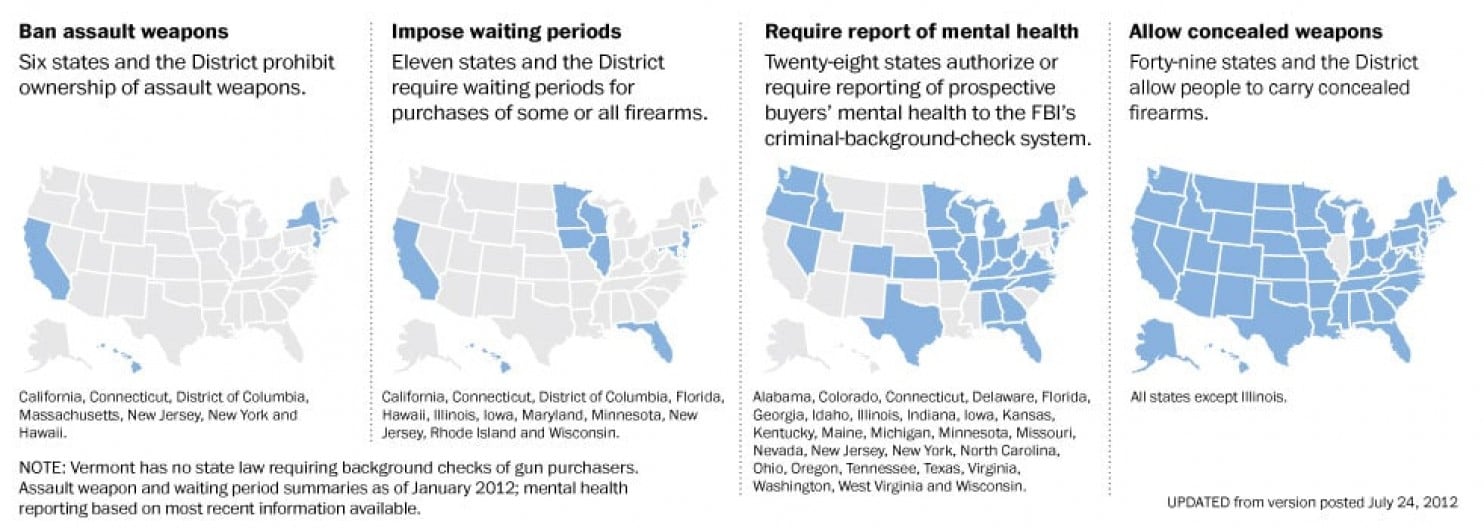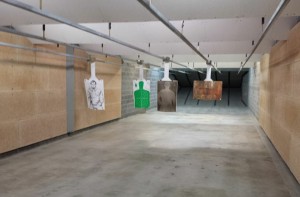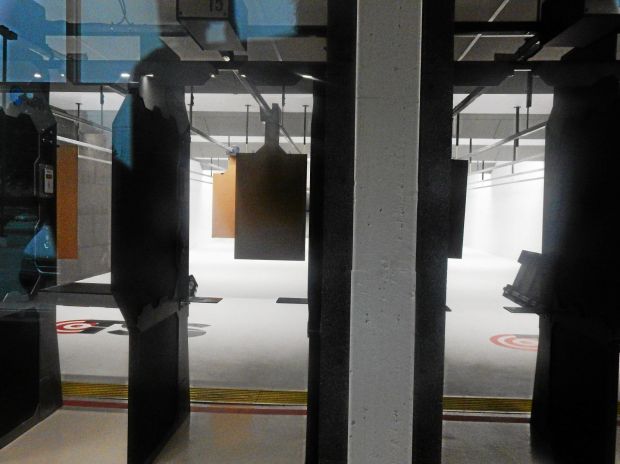
The 28 gauge rifle can perform lethal tasks. However, the right hands must be used. Stuart Williams, a Yale graduate and a Berkeley University graduate, is one example of such a shooter. He has taken part in more than 250 big game and bird hunting expeditions throughout the world, and has shot more than 1,000 big game and bird specimens. A professional hunter, he is proficient in using a 28-gauge rifle to accomplish his job.
Less recoil
The 28 gauge caliber is a popular choice among gun enthusiasts. It has less recoil, and is lighter. It is possible to shoot a 28 gauge shotgun in a semi-auto gas without worrying about controlling the gun's recoil. These guns have a smoother, more even shot pattern than other, heavier gauges. However, there are some limitations to the 28 gauge.

Lightweight
The Lightweight 28 gauge is a popular hunting and target shooting caliber. The 28 gauge can be used in a variety ammo and gun combinations. This caliber is great for professional and recreational shooters. The 28 gauge has many benefits. This caliber is a good choice for hunters because of its many advantages. This gun is versatile and can be used for hunting small game, deer, turkey and other small game.
It's easy to swing
Many people argue that the shot pattern delivered by 28 gauge is better than those delivered by other smaller shotgun gauges. Because the square load of a 28-gauge shotshell contains equal amounts of pellet height and width, it is easier to create shot patterns. This should theoretically result in less deformed pellets and better shot patterns. But this is not the case. In practice, 28 gauge ammunition delivers a more uniform pattern and less recoil, which is an important advantage for new shooters.
Cost
Before you buy a double-barrel shotgun you need to determine your budget. A 28 gauge shell is approximately $1,400 less than a 20 gauge equivalent. These guns are both high-quality but the price difference between them is small. A 28 gauge shotgun of high quality will cost you approximately $1,800. Its quality and durability are comparable to premium 20 gauge shells.

Munition
There are several types of 28 gauge ammunition, but no one has any particular preference for the brand. It may surprise you to find out that this brand has a high growth rate. This gauge has inspired many new ammunition loads. These 28 gauge loads are among the most sought-after:
FAQ
Is it possible to hunt without a licence?
Yes, you can hunt without a license. You are violating the law by hunting without a license.
This could lead to jail time and fines.
Some states allow residents without a license to hunt. You can hunt in some states without a permit if you check with your state department for natural resources.
How much does it take to hunt?
Price of a hunting trip will vary depending on where your are located, the species of wildlife that you wish to capture, and the animal you intend killing.
A two-person hunting party costs between $500 and $1,000 on average. This includes lodging, food and gas.
Some areas charge higher prices than others. You will pay more if you hunt during peak season like fall turkey season.
What kind of training do I need to become a hunter? How long is it?
Basic courses are required in order to learn how you can hunt. This course covers the basics of hunting, as well as information on the laws.
This course will teach you how to safely handle guns and ammunition. These items can also be used safely.
This course lasts anywhere from two weeks to three months. Some courses can also be done online. Others are taught in person.
A written test is required to qualify for a license. You might also need to prove that you have successfully completed a hunter education program.
What is the cost of getting licensed? What if I don’t make enough money?
The cost of getting licensed varies depending on the state you live in. It costs between $20 and $100.
You might be eligible to apply for a loan/grant if you don’t have enough money.
Additional to paying the fee, you'll need to buy a tag. Prices for tags vary depending on what type of game you hunt.
Tags are available to deer, elks and bears as well waterfowl, upland bird, and furbearers (like foxes).
Some states require registration with the Department of Natural Resources to be eligible for a license.
To ensure that you comply with all regulations, it is important to check the local laws before you start hunting.
Is hunting bears legal in Alaska?
Yes, bear hunting is legal in Alaska. Bear hunters may use traps and snares in order to capture them. Others use dogs for tracking down bears.
Bear hunting is regulated by the Alaska Board of Game. Before they venture out into the woods to hunt bears, hunters must be issued a bear badge.
Denali National Park Preserve is a popular spot for bear hunting. You can even take part in guided hunts that charge a lot of money to kill bears.
Which state has the highest number of deer hunters?
Wyoming is the state that has the most deer hunter's. It also sells most hunting licenses annually.
The state with the second-most deer hunters is South Dakota. It is third in terms of the number sold annually of hunting licenses.
The state with the fewest deer hunters is New Hampshire. It is the least populous state in terms of hunting licenses per capita.
Is hunting dangerous?
Yes, it is possible to get hurt while hunting.
There are many different ways you could injure yourself.
Poor shooting techniques can be one of the reasons. For example, you may shoot at the wrong angle or hit the wrong part of the animal.
A second risk is that another animal may attack you.
Hunting accidents happen every day. Guns cause many deaths and serious injuries.
Hunters should always keep their guns unloaded until they have reached their destination.
When they are out in the woods, they should make sure that their guns don't get loaded.
Keep your eyes open. Watch where you step and listen for sounds.
Avoid interacting with animals unless your are ready to defend.
Never chase after prey. Instead, just wait patiently for them.
Do not take shortcuts. They could result in injury or death.
Be careful around cliffs and other places where you cannot see what's below.
Avoid streams and rivers. These areas can flood suddenly.
Hunting is a time to forgo alcohol. It can affect your judgment and slow down your reaction times.
All safety equipment should be kept close to your body. You should always carry a first aid kit and flashlight.
It is vital to learn how to deal with an emergency. Do not assume you know the basics of first aid or CPR.
How many deer hunters there are in the U.S.?
The United States has more than 20,000,000 deer hunters. This includes both recreational and professional hunters.
Statistics
- - Percent of residents with paid hunting licenses: 0.7%- (stacker.com)
- Less than 1% of Hawaii's population has a hunting license. (stacker.com)
- Thanks to the 1937 Pittman-Robertson Act, an 11% excise tax was placed on the sale of firearms, which were then used for conservation. (stacker.com)
- Over the past 50 years, the number of hunting licenses in California has been on a rapid decline, falling 70% from more than 760,000 in the 1970s to under 268,000 in 2020—even as the state's population has skyrocketed, according to The Mercury News. (stacker.com)
External Links
How To
How to hunt wild hogs
Wild hogs are large animals found in North America, Africa, Asia, and Europe. Wild hogs are omnivores; they eat vegetation and small animals such as rabbits, mice, birds, insects, and fish. They usually eat at nights. They usually feed at night. After the six-month gestation period, one piglet will be born. A sow can give birth once every two years. Wild hogs live alone, but sometimes they are part of a group called herds.
The average weight of a wild boar is 200 pounds (90 kg). Their average head length is 10-12 inches (25-30cm), and their body length is 20-30 inches (50-75cm). Wild pigs have short tails, long legs and broad shoulders. They have a thick layer of fat under their skin.
They have strong senses of smell, hearing and sight. They use these senses to detect danger and find food. They can run up to 35 miles per hour (56 km/h) and jump distances of up to 15 feet (4 m). They are sharp-toothed and have sharp claws. They are aggressive when defending themselves against predators.
Hunting wild hogs is difficult due to their intelligence, speed, and elusive nature. Hunting wild hogs is a dangerous business. If hunters shoot too early, the animal may escape. If hunters are too late, the animal might die before it reaches shelter.
There are many ways to hunt wild hogs. The most commonly used method is shooting. This requires hunters to track down the animal and then wait until it comes into range. Trapping is another option. Trapping involves setting traps near water sources where the hogs drink. A trap may contain a scent lure such as peanut butter and corn meal. When the trap is opened, the hunter shoots a trapped pig.
Snaring is another option. Snaring uses a noose made out of rope to catch the pig. It works best when the pigs are caught during their mating season.
Other options include poisoning or spearing. Netting and spearing are methods of stopping pigs' breathing by placing a net around the neck or spearing them. Poisoning involves injecting poison into the pig's body.
Hunters who wish to hunt wild hogs need to be prepared for the cold weather. To stay warm in some areas, hunters can wear snowshoes. Some hunters bring dogs with them to help them track the animals.